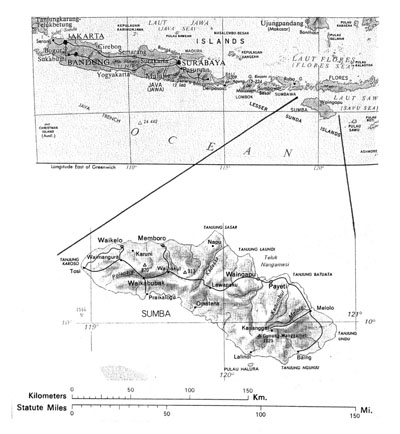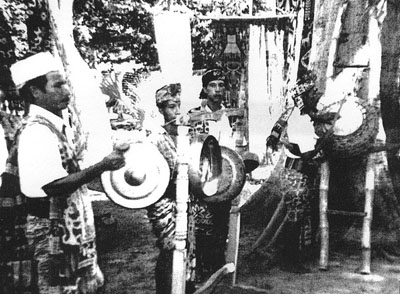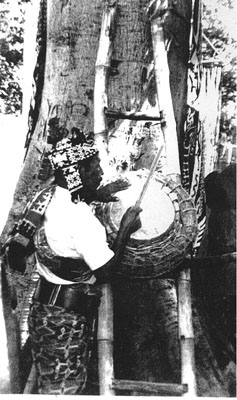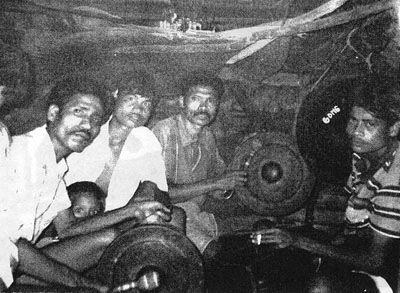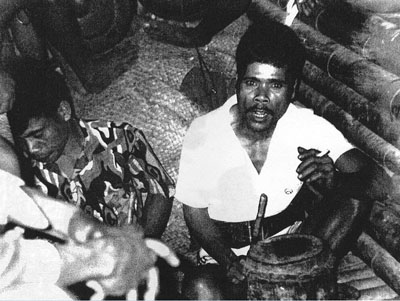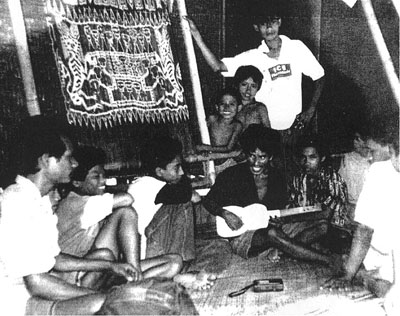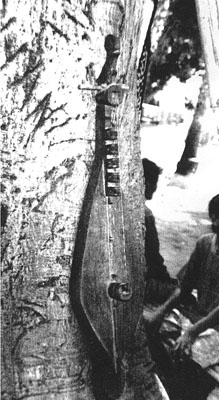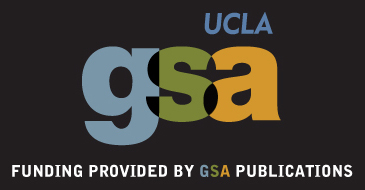An Introduction to the Traditional Music of Sumba (1995)
Biography
Jason Schenker was a composition student in the Oberlin College Conservatory of Music when he undertook a study of the music of Sumba as part of a semester abroad program with the School for International Training in 1995. The Indonesia program director, Mr. Thomas M. Hunter, Jr., made the following comment on Jason’s paper: "In addition to containing valuable musicological information, [Jason's] Independent Study Project paper described the cultural setting of the music he encountered in Sumba. This remarkable ISP could easily be the basis of an in-depth study of the rarely-studied music of Eastern Indonesia."
Jason Schenker would have been the best person to do this in-depth study, but in January 1996 he died from a respiratory ailment. He had submitted his paper to two of his Oberlin professors, Randolph Coleman, composition, and Roderic Knight, ethnomusicology. Impressed with the research, Prof. Knight undertook the preparation of the paper, from Schenker’s handwritten original, for this publication. Prof. Knight wishes to acknowledge the assistance of Jason's parents, Karl and Lynn Schenker, of Derry, New Hampshire, who made Jason's tapes and photographs available, and to Stephen Clink for preparation of the musical examples.
Abstract
Based on a brief field research trip to Sumba, south of Flores in Indonesia, the article includes background information on the historical, cultural, and religious settings for music in Sumba. The principal focus is on the drum and gong ensembles. Five transcriptions from field recordings of actual events are presented, and their rhythmic and melodic features noted. The song tradition is also covered, with one transcription and four song texts in Sumbanese with English translations.
The idea of studying the music of Sumba was first suggested to me by Dr. Andrew Toth. He noted that very little was known about the music of Sumba except that it was a gong tradition. The prospect of studying music that had received relatively little attention in ethnomusicology was refreshing to me. At the time I was on a semester abroad studying gamelan in Bali, but I was becoming increasingly frustrated with my studies. The extensive presence of westerners in Bali—anthropologists, ethnomusicologists, and tourists alike—made it difficult to find what I was seeking: a more grass-roots tradition whose compositional features I could study first-hand. As a student of composition, I was less interested in the relationship between sacred and secular music or the effect of Western influence on the development of artistic style, and yet these subjects seemed essential in any type of modern day study of Balinese gamelan. I was also dismayed because it seemed everything I was studying had volumes written about it already. Thus, given the opportunity, I directed my attention to Sumba. This provided an opportunity for research in less explored aspects of Indonesian music.
Map 1. Map of portion of Indonesia and detail of the island of Sumba. Maps assembled from the Rand McNally World Atlas, 1993, Copyright by Rand McNally. Used by permission.
The music of Sumba retains a rudimentary style, devoid of the considerable artistic floweration that typifies gamelan music. In what little written material I found, Sumbanese music was always referred to as gong beating rather than gong music. Studying in Sumba gave me the opportunity to, in some sense, look into the past and possibly gain some insight into the roots of some musical traditions. I entered Sumba virtually blind. I had no contacts, no research plan, and no idea what to expect. This allowed me the freedom to follow any leads I felt were relevant. My search for music was difficult from the beginning. Unlike Bali, where music is so interwoven into everyday life and so widely performed that hardly a day goes by in which one does not come upon a live performance, the music of Sumba is rarely heard. It is only played at specific ceremonies such as weddings and funerals. At one point I questioned whether or not I would hear any music at all. As it turned out, I was lucky enough to be at the right place at the right time, and was able to witness and record several events. I was also unexpectedly introduced to a rich folk song tradition in East Sumba that was not mentioned in any of the literature I had read.
The work in this paper is almost entirely based on personal observation and evaluation during a two-week stay in Sumba. The few written sources available I have used in only a complementary manner, to provide some background on the history, geography, and religion of Sumba. In no sense is this paper a comprehensive study of the musical traditions of Sumba; rather it is intended as an introduction to Sumbanese music and a possible starting point for more intensive research in the future.
Background Information
The island of Sumba is split into two main regions: East and West. The regions differ significantly in climate, population, and culture. East Sumba is the larger region, with a much drier climate and grasslands similar to areas farther east such as Timor and Australia. Waingapu, Sumba's largest town and main port of entry is in East Sumba. Throughout history more outside contact was made in East Sumba through trade, allowing for more extensive Muslim and Christian influence than in West Sumba. Therefore, East Sumba has maintained fewer of its traditional customs than the west (Storey 1992). My research in East Sumba was conducted in two neighboring kampung (traditional villages) about 20km outside of Waingapu named Kampung Marumata and Kampung Lambonapu.
In contrast to East Sumba, West Sumba is green and fertile, with an extensive rice growing agricultural base. West Sumba has no natural port of entry and has received less outside influence than East Sumba, therefore maintaining much more of its traditional beliefs and customs. My research in West Sumba was conducted in the very traditional Kampung Tarung just outside of West Sumba’s only major town, Waikabubak.
According to Tracey Kissoon and John Carrier, authors of one of the only books on the culture of Sumba, today's population descended from settlers who fled the many large wars in East Java during the third to fifth century CE. Chinese and Indian trade may have existed with Sumba as early as the sixth century CE, but it wasn't until the eleventh century that trade with Sumba became common (Kissoon and Carrier 1991). Javanese chronicles from the fourteenth century refer to Sumba as being under the influence of the Madjapahit Empire, but still free of any political control from East Java. During the fifteenth and sixteenth century, as the sandalwood and slave trade were picking up in other areas of Eastern Indonesia, Sumba was still relatively isolated, allowing a greater preservation of traditional customs. In 1751 the Dutch East India Company began an extensive slave trading operation on Sumba. In 1866 the Dutch first settled in Sumba, but they were unsuccessful in establishing any sort of political sovereignty over the area. In fact, even the formation of the Indonesian republic in 1949 had little influence in Sumba where the traditional rajas still maintained control. In 1962 the first elections were held in Sumba, and, not surprisingly, the son of a raja was elected to the office of regional head of the area. To this day the royal family holds all the political positions on the island (Kissoon and Carrier 1991). In recent years tourists have taken an increased interest in Sumba, but it still remains one of the most traditional cultures in Indonesia.
It is estimated that about half of the Sumbanese adhere to the Marapu religion (Storey 1992). The word Marapu comes from ra meaning “big/many” (Sumbanese) and apu meaning “grandmother/ancestor” (Kissoon and Carrier 1991). Not recognized as one of the five religions outlined by the Indonesian government, it lacks a standard holy book, and customs vary from kampung to kampung. The following is a description of the Marapu religion as presented to me by Julianna Ledatara of Kampung Tarung.
Marapu is not to be confused with God. God created the earth and heavens and created Marapu to look over the people of earth. Each clan in Sumba was started by a Marapu Maluri, a Marapu born in heaven and placed on earth. When someone dies, if they are given a proper burial, they join the world of Marapu and become what are known as Marapu Mameti, Marapu born on earth. The Marapu Mameti are often called upon for help in kampung matters such as weddings and funerals. Larger matters such as the harvest require the help of the clan's Marapu Maluri, who can serve as the intermediary between people and God. In times past the Marapu Maluri of Kampung Tarung decreed that his kampungwould be the site of a unique month-long ritual in November with gong music every night and many sacrifices on the last night. The ritual, called Wula Podhu, is believed by the people of Kampung Tarung to keep them on good terms with Marapu (Ledatara, p.c., 1995). Gongs and drums are required for virtually all religious events because they are the means for calling on Marapu.
Music in Sumba
Bronze drums and gongs figured prominently in the Dong-son culture of North Vietnam, dating back to around 3000 BCE. These instruments spread southward through peninsular Malaysia and into Indonesia. Pitched gongs have been used in Java since the ninth century CE (Baylor 1989). It is my estimation that the spread of the influence of the Madjapahit Dynasty brought similar gongs to Sumba. It is difficult to verify when gongs were first introduced in Sumba because there is no accurate documented history. Some of the only glimpses we have into Sumbanese history are motifs that are used in Sumba's unique ikat weaving. Gongs are illustrated in much of the weaving including some ikat that residents claim to be over 300 years old. Other references to gongs are made in a traditional harvest song in which frogs are referred to as “the gongs of the pools,” and thunder is referred to as “the drum of the heavens” (Onvlee 1980).
The most frequent use of gong music is for weddings and funerals, both of which I was able to attend in East Sumba. I saw two different wedding dances in Kampung Marumata. Both were played by the same ensemble consisting of four suspended gongs and one tambur (drum). The gongs were made of bronze and were identical in shape (see Fig. 1).
Figure 1. Gong ensemble for a wedding dance, Marumata, E. Sumba. Photos by the author.
The gongs range in size between 30-50 cm. in diameter. They are struck to the right of the boss with a wooden mallet, about 15 cm. long wrapped in cloth. All of the gongs are suspended from one wooden frame. The players on the ends lift their gong by the rim in the left hand without removing it from the frame, and strike it with the mallet in the right hand. The two gongs in the middle are both played by one player. He holds one of the gongs in his left hand, but lets the other hang freely. Because the hanging gong is allowed to ring, it is heard most prominently. A rough approximation of the pitches of these gongs, done simply by ear on location, is as follows:
| player 1 | smallest gong | middle C |
| player 2 | gong in hand |
A below middle C |
| player 3 | largest gong | E below middle C |
Accompanying the gongs is a drum called tambur. It is made of wood, about 50cm in diameter with a horsehide head about 30cm in diameter. It is played with a simple stick in the right hand and is dampened with the flat left hand (see Fig. 2).
The music for the first dance repeated every four beats and had little melodic development. The two outside players kept the beat while the man in the center repeated a syncopated ostinato. The tambur player repeated a two beat pattern. A transcription into western notation is presented in Ex. 1.
Example 1. Gongs and tambur for wedding dance, Marumata, E. Sumba.
This music was played for a dance performed by six women, each with bells and tassels in their hands. They stayed mostly in two rows of three about three feet apart. They swung the tassels around in small circles and stepped to the left and right, occasionally passing through each other. The dance seemed surprisingly slow for the fast paced music.
The second dance also made use of repetition, but was more complex, incorporating the technique of interlocking parts which is so integral to other gong traditions such as Balinese gamelan. The separate parts are shown in Ex. 2. The aural effect, however, groups the G and C gongs together to create a repeating syncopated ostinato over the steady time keeping of the A and E gongs, as shown in Ex. 3.
Example 2. Second wedding dance, Marumata, E. Sumba.
Example 3. The aural effect of gong parts in Ex. 2.
The repetition was broken by occasional high-pitched shrieks by the women watching. There were two male dancers with their hands on their hips. The dance was much more festive; the dancers hopped and circled each other. Occasionally, toward the end of the dance, one of the gong players would shout "Ha!" and the music would stop for two beats during which time the dancers would leap into the air.
During my stay in Sumba, I was informed many times that the most interesting gong music took place when someone dies. This presented a problem, as there were no existing cassettes of funeral music. I was granted with an unbelievable opportunity when a friend from Kampung Marumata, Pak Alexius, informed me that a raja had just recently passed away and one of the many ceremonies involved in a proper burial was going to take place. Not only that, the ceremony involved music that could only be played when a raja had died and therefore was only heard about once every generation. There was, however, a problem. No westerners were allowed to go. I sent Pak Alexius with my tape recorder strapped into his selendang (shawl). The quality of the recording is very poor, but it is clear enough to demonstrate that this music is very different from the other gong music I had heard. It had a basic rhythmic pattern that repeated every two measures and no two repetitions were exactly alike. There were subtle variations each time through. The music had a more relaxed feel and was very syncopated. The rhythms are vaguely reminiscent of modern day funk music. Because of the poor quality of the recording and the fact that I could not witness the ceremony, it is very difficult to make an accurate transcription. Nevertheless, I have attempted to represent this music, as shown in Ex. 4. The music continued in a similar manner for the full length of the cassette. Because of the loose feel to the music and the slight variations, I believe that the gong parts are improvised.
Example 4. Funeral music recorded at the house of Umbu Meha Telapanjang, for a raja in Kampung Mauliru, E. Sumba.
I thought that the funeral music would be my last exposure to the gong music of Sumba, but the opportunity arose again. In a village in West Sumba, a father had committed incest. A special all night ceremony calling on the help of the Marapu Maluri was required to cleanse the village. This ceremony I was allowed to attend. I followed a young man through woods and rice paddies in the middle of the night to the kampung. When we arrived the ceremony had already started. The entire village of about 50-60 people were all squeezed into one hut. Everyone was smoking cigarettes and chewing betel. The mood was surprisingly festive for such a serious event. Two older men did all of the ceremonial talking; they seemed to be reciting a memorized passage. About every ten minutes, five minutes of repetitive gong music was played. One man played a gong in his left hand, while another played a gong in his lap and another in his hand. A third man played one suspended gong and one in his lap. There were also two small drums being played (See Figs. 3 and 4).
The gongs were of poorer quality than those I had seen in East Sumba; the pitches were almost indistinguishable. Example 5 is a rhythmic transcription of this music.
Example 5. Music for a cleansing ceremony, W. Sumba.
As in one of the wedding dances, this music was marked by periodic shrieks by women of the village. The evening continued in this manner with a few breaks. The ceremony came to a climax the next morning when, at about 10:00 AM, a pig was slaughtered to the accompaniment of repetitive pounding of all of the gongs and drums.
Even though I was only exposed to a small amount of music, I am able to draw some conclusions. The music retains a simple style and repetition is common. Everything is in four and repeats every one or two measures. While melodic development is minimal, interlocking parts and improvisation are some aspects that provide interest. It seems that the gong music of Sumba is more important for its function of calling Marapu than as a means of artistic expression.
Upon entering Sumba I was unaware of any musical traditions there other than the gong music. When I arrived in Kampung Lambonapu in East Sumba, and informed the residents that I wanted to study traditional Sumbanese music, they introduced me to the folk song traditions. The repertoire comprises songs dealing with everything from the rice harvest to forbidden love. The songs are accompanied by a plucked lute called the njungga. A typical njungga is about 1m long, with two strings and five frets. It is often decorated with images of Marapu (see Figs. 5 and 6).
Figure 5. Pak Melkianus Hamapati singing folk songs, Lambonapu, E. Sumba. Pak Alexius, my assistant, is at left.
On some of the instruments the body is hollowed out with a hole in the back for resonation. The strings are tuned to a major third apart. The first fret is at the minor third, the second at the perfect fourth, the third at the perfect fifth, the fourth at the major sixth, and the fifth at the minor seventh. I found it odd that there was no fret at the octave. The octave is played by playing the string while pressing down just beyond the last fret. The standard way to play the njungga is to fret only the higher string, leaving the lower string as a pedal. The basic chord used to accompany most songs is a perfect fifth achieved by leaving the lower string open and pressing the higher string on the first fret. Many of the songs revolve around the fifth scale degree. The melody line is often doubled on the higher string. I spent two days learning the njungga and a few folk songs from Pak Melkianus Hamapati of Kampung Lambonapu. A typical folk song as performed by him is transcribed in Ex. 6. See the appendix for a translation of this song and three others.
Example 6. Song with njungga, "Mupambut ta witu mundu nyai rambu," sung by Pak Melkianus Hamapati, Lambonapu, E. Sumba. Sung over an E drone on the njungga.
While folk songs and gong music are the only traditions that are developed in any way in Sumba, I observed some other instruments worth noting.
| talla gongs | large gongs used only to announce a death in the kampung. Some today are made out of old metallic oil drums |
| njungga ngoro | a smaller, one stringed relative of the njungga of East Sumba. It is only found in Sumba’s westernmost region, Kodi |
| giring-giring | bells, sometimes held by dancers, but more often hung on animals |
| gunggu | small mouth harp made of bamboo, similar to the Balinese genggong |
My stay in Sumba was too brief and my exposure too limited to allow me to draw all-encompassing conclusions about the music of Sumba. But this was not my intent. I was able to study a little explored musical culture. The study has given me a good deal of insight and has changed the way I perceive music as a whole. It was an entirely new experience to see music in a setting where it was not only a functional part of life, but actually essential. It was also refreshing to see music presented in a form where everyone can take part. Because the tradition encompasses only repetitions and metrically-even figures, it can be understood and performed by everyone. Studying the music of Sumba has revealed to me something I believe is at the root of all music: not overly ornate artistic floweration, not highly intellectualized concepts to be grasped only by a select few, but rather a means by which we can communicate with the divine.
Appendix: folk song translations
Song 1 (See Ex. 6)
Mupambut ta witu mundu nyai rambu
Witu mondu Lambanapu
Ai luaka wanna wammu arunyaMupa gapi jara leawanyai rambu
Gi la leawe kondo mara ai luaka wana
Wammu arunyaThere is no time to go home
We become one as we pull the weeds
In each of our villagesWe must not be separated
From the traditional customs
of each of our villagesSong 2
Eri rambu mbalu
Tundunyai pa wuku hi lupa tundunyia
Ai harui mbiada nya
Dji Albai i nna laimapa ana dai rambu
Napa ana lai tupa millaEri rambu mbalu
Tundunyai pawuku hi lupa tundunyia
Aiharui mbiada nya
Nata wuru lai kara bata mu rambu
Mupa bata lai eti ango mu muEri rambu mbalu
Tundunyai pa wuku hi lupa tundunyia
Mbaku nganya lai napa nga ngu nai rambu
Napa paita laii kapu dalangungu
Milli tuana kata mban nyal ya nai eri
Ma la witi lai Mada danguOh my love whom I adore
Because I follow my desire, I become like this
Finally we are in misery
If mother delivers our child
in a poor situationOh my love whom I adore
Because I follow my desire, I become like this
Finally we die in misery
The jeweled ring is shatteredYou break your lover’s heart, oh my love
I follow my heart
Because I follow my desire, we are in misery
The food I eat tastes like bile
Finally, that is enough, my love
That’s all I have in my heart to tell youSong 3
Muka tambal kau patingi nyai rambu
Nata lia lai ngoru ludu ngu
Eha na eriggou mau pikiru pahamukinya
Kata lupa kata lanyapu
Ndaku ngiara lai mbuti mbohu no hana eringou
Kaku mbuti nya, lai-ngiapa mba wamu
Eha na eri nou mau pikiro pahamukinya
Kata lupa kata lanyapu
Mbaku nga nya lainapa ngangu
Eha na eri gou kana papai ta ndou
Lai kapu da langu
Eha na eri gou mau pikiru pahamukinya
Kata lupa kata lanyapu
Mbaku unnu nyana wai ndua naa
Eha na Erigou kanapur lai waka lang ngu
Eha na erigou mau pikiru pahamukinyaNow listen, my love
To the words of my song
Oh, my love, think about them well
So that we can disappear
I am not a monkey thief my love
In order that our love can be true
Think of these words well
So that we can disappear
I am eating a meal
It feels like bile
From the bottom of my heart
Think of those words
So that we can disappear
I am drinking water
That tastes so bitter
Oh think of these words
So that we can disappearSong 4
Oh tana humba tana ngia pak ndend nggu
Oh tana humba tana luku nggu
Peti weling rba ana kianda ka
laka lunggunai in na ka
lundu ku ma tua mbiaka nii
Letana kau ka
Npira ha du kaka
Kupa tanda ninyai ka
Rukunda inaamanggu
Nyapa kai na sa ngindi dai ka tundu
Wara-warana
Ku monu mannu nggau lundu ke ka mbeliOh my land Sumba, my birthplace
Oh my land Sumba, my mother land
Since I was little
In the lap of my mother
Until I grew up
In a foreign land
Oh I am so miserable
If I think back
about my mother and father
Although separated by valley and sands
I hope so much to see you when I return
Baylor, Eric. 1989. Musical Instruments of South East Asia. Singapore: Oxford University Press.
Kissoon, Tracey, and John Carrier. 1991. Sumba, a Unique Culture. Waikabubak: Nafwa Productions.
Ledatara, Julianna. 1995. Personal communication. Tarung, Waikabubak, Sumba, N.T.T.
Onvlee, L. 1980. “The Significance of Livestock on Sumba.” In The Flow of Life: Essays on Eastern Indonesia. Cambridge: Harvard University Press.
Storey, Robert. 1992. Indonesia. Hawthorn: Lonely Planet Publications.
Additional Personal Communications
Pak Alexius Bayo Pete, April 1995, Marumata, Waingapu, Sumba, N.T.T.
Pak Melkianus Hamapati, April 1995, Lambanapu, Waingapu, Sumba, N.T.T.
Pak Mete Bulu, April 1995, Marumata, Waingapu, Sumba, N.T.T.

